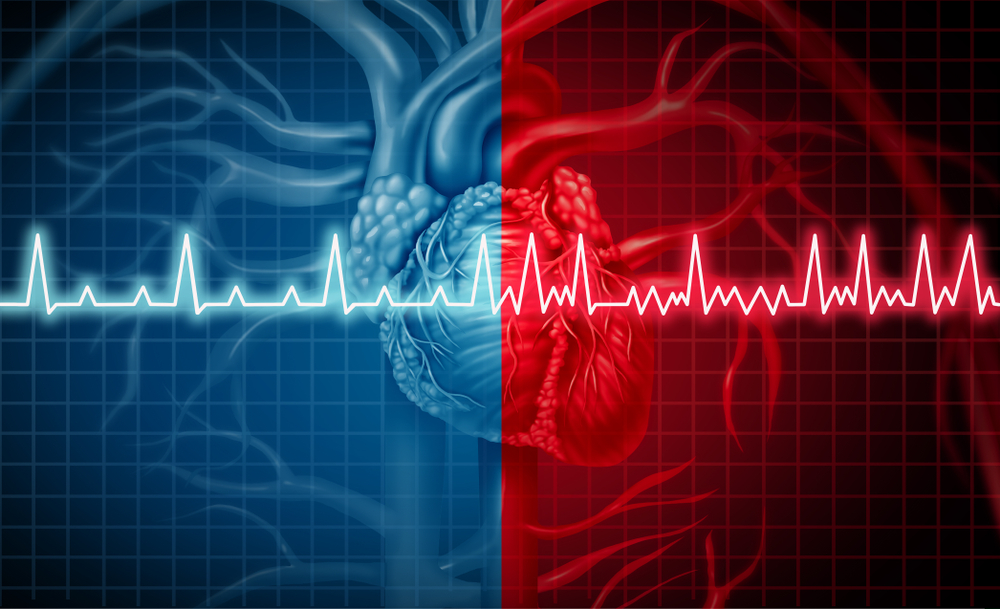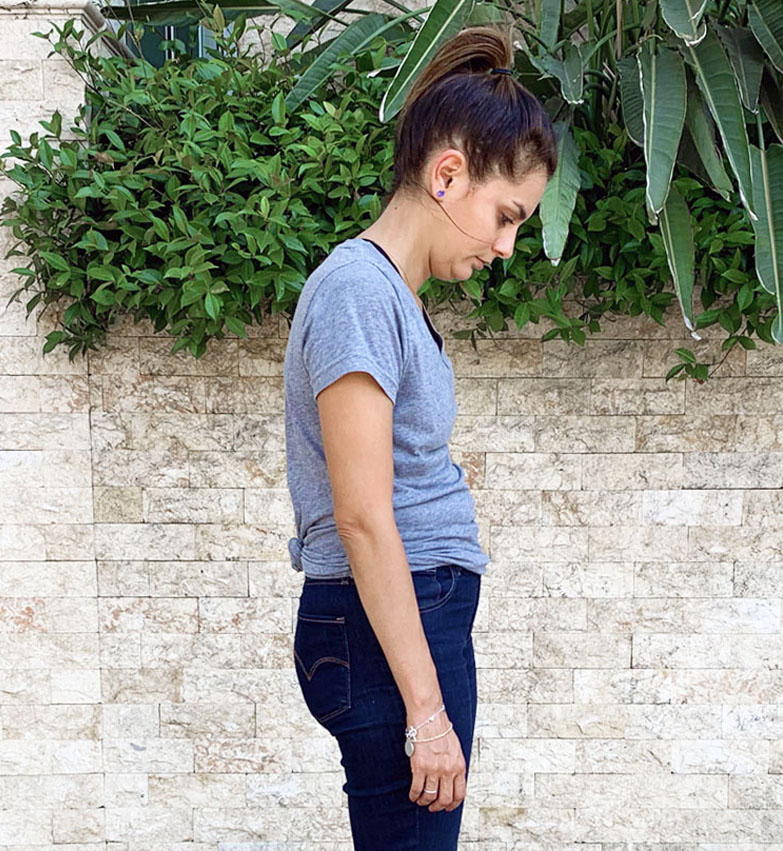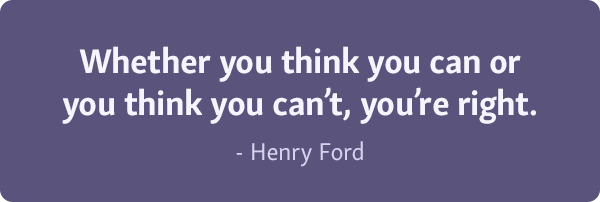
Do your thoughts have any influence on your mood? How-to use positive thinking exercises to your advantage.
Think back to your first kiss. Do you feel your heart beat faster? Or warmth in your chest and belly? Your brain just recreated that experience in your body based on a thought–a mere memory. This brain and body connection is happening within you all the time.
Here are some less pleasant thoughts I hear daily as a body-worker:
“I’m just getting old.” “My mom has the same problem with her knees.” “My body is failing me.” “I injured my knee in high school, and my doctor told me I would likely get arthritis in it when I got older. (Order Zolpidem) ” “I’ve had my back pain for decades.” “I am broken.”
In each of these cases, the client is unconsciously relinquishing his or her sense of agency.
With each of these thoughts, the underlying belief is, “I am destined to have pain. I am powerless to prevent it.” In some cases, the client is also unknowingly identifying with the pain by calling it “my pain.” But why does this matter?
It matters because our thoughts shape the world around us. So the question is, can negative thoughts make you sick?
The Physiology of Negative Thinking
We know that our thoughts have a tremendous impact on how we see the world. What many do not realize, however, is that your thoughts can actually have a physical impact on your body.
Your thoughts have the power to release a cascade of chemicals (hormones, neurotransmitters, and neuropeptides), which can alter your physical state. (1)
This is evidenced most clearly in the placebo effect. In dozens of cases, researchers have seen that if a person believes that a drug or treatment will benefit them, they often get better. Conversely, if they think a treatment will harm them, they get worse.
Actual physiological alterations can occur as a result of taking a placebo, including changes in blood pressure, heart rate, cortisol levels, growth hormones, etc. (2, 9).
Studies have discovered that even verbally suggesting that a treatment will increase pain, can cause cortisol levels to rise. (9)
This power of suggestion even has the capacity to change how the human body reacts to food. “In one study, participants who drank a milkshake labeled as ‘indulgent’ showed reduced levels of the pro-hunger hormone ghrelin compared with those who drank an identical milkshake labeled as ‘sensible.’ (9)
Maybe the lesson here is to tell yourself that pizza is a powerful antioxidant!
What You Think Your Brain Makes Real
The HeartMath Research Center has also been diving into the power of thoughts (and the feelings they create) on the state of the heart. Their research has clearly shown that emotions affect the heart. Negative emotions cause the heart rhythm to become erratic and disorganized; whereas, positive emotions cause the heart to become more coherent.(8)
Flashback to that first kiss again, and notice how your heart reacts.

All this is to say, what you think, your brain makes real. It’s like we are living in a Matrix created by our own thoughts.
This concept of brain-body connection, that our thoughts create physical changes in our bodies, is one of the main tenets of the biopsychosocial model of pain which states that pain is multi-dimensional.
While pain may be experienced as a result of tissue damage (e.g. a herniated disk or a torn muscle), a person’s experience of pain is also influenced by social and psychological factors like beliefs, emotions, lifestyle/health/social factors, physical habits, and coping strategies. (3, 4)
How to Use Thoughts To Support Healing
So, how can you use this concept to improve your health? The first step is to become aware of the undercurrent of thoughts running through your mind.
Observe your thoughts with compassion and curiosity. Watch them rise up, allow them to be, and examine them. Note that the thought is just a thought. It’s not a fact. Tune in to how the thought feels in your body.
As you begin to become more aware of your thoughts and the impact they have on your body, you can start to try on new thoughts.
The practice below will guide you through a “thought ladder” where you move from a thought that’s no longer getting you the results you want to a thought that is believable to a thought you might want to choose to believe. (6)
Positive Thinking Exercises: A Guided Thought Practice
Step 1 – Stand in Mountain Pose
- Stand with your bare feet on the floor, about hip-distance apart.
- Let your arms hang down by your sides.
- Take a breath in through your nose, and with the exhale, close your eyes.
- Settle your attention at the point where your heels, the balls of your feet, and your toes connect to the floor beneath you. This will help pull your awareness deeper into the body.
- Check-in with your breath, your heart-rate, the state of tension or ease in your face and shoulders, the pace of your thoughts.
Step 2 – Within your mind, repeat the phrase, “I am broken” three times.
- Feel the words “I am broken” inside you.
- What do you notice happening within your body?
- Has your posture shifted?
- What has altered in your breath, your heart rate, your muscle tone, your pain level?
- Below is an image of the sort of posture I often see when someone has been repeating “I am broken” to them self for years.

Step 3 – Within your mind, repeat the phrase, “I am” three times.
- Feel the words “I am” inside you. Pretty neutral, right?
- What changes within your structure and your physiology with this neutral thought?
- Below is the sort of shift in posture I often see with this shift in thought – notice she’s standing a little taller.

Step 4 – Within your mind, repeat, “I am resilient” three times.
- Feel the words “I am resilient” inside you. Different, right?
- How does that feel in your body?
- Do you notice any change in your face, your shoulders, your heart, your perception of pain?
- Below is the postural shift I often see in someone who chooses to think an empowering thought like this.

Step 5 – Get a piece of paper and divide it into 2 columns titled “Conscious” and “Unconscious.”
- Write down the 5 thoughts that are most constantly on repeat in your mind in the “Unconscious” column.
- In the “Conscious” column, write down a neutral or a positive thought you substitute for the negative.
- Take this new way of thinking with you into your day and notice how your body responds.
As humans, we are complex multidimensional entities. We cannot always control what happens to our bodies, but we do have the power to become aware of our thoughts, to gently change them to thoughts that better serve us, and in the process provide a more hospitable environment for healing, recovery, and action.
Related Article: The Secret to the Change You Crave: How to Change Your Mindset
Learn more about our Therapy Ball Products and Programs
Interested in video and blog content targeted to your interests?
References:
- Dispenza J, Amen DG. Breaking the Habit of Being Yourself: How to Lose Your Mind and Create a New One. Carlsbad, CA: Hay House; 2015.
- Shmerling RH. The placebo effect: Amazing and real. Harvard Health Blog. https://www.health.harvard.edu/blog/the-placebo-effect-amazing-and-real-201511028544. Published November 2, 2015. Accessed July 9, 2019.
- Chaitow L, DeLany J. Clinical Applications of Neuromuscular Techniques. Edinburgh: Churchill Livingstone; 2000.
- Recovery Strategies – Pain Guidebook. Greg Lehman. http://www.greglehman.ca/recovery-strategies-pain-guidebook. Accessed July 9, 2019.
- Katie B, Mitchell S. Loving What Is: Four Questions That Can Change Your Life. New York: Three Rivers Press; 2003.
- Castillo C. Life coach training certification at The Life Coach School: Brooke Castillo. The Life Coach School. https://thelifecoachschool.com/podcast/26/. Published April 12, 2019. Accessed July 9, 2019.
- Leibovici L. Effects of remote, retroactive intercessory prayer on outcomes in patients with bloodstream infection: randomised controlled trial. Bmj. 2001;323(7327):1450-1451. doi:10.1136/bmj.323.7327.1450.
- Chapter 04: Coherence. HeartMath Institute. https://www.heartmath.org/research/science-of-the-heart/coherence/. Accessed July 9, 2019.
- Wager TD, Atlas LY. The neuroscience of placebo effects: connecting context, learning and health. Nature Reviews Neuroscience. 2015;16(7):403-418. doi:10.1038/nrn3976.















It’s so exciting that science is finally catching up on what many great leaders and thinkers have been saying for decades.
Our brains will look for data to prove the words we speak. When you speak out positive words, your reticular activation system will push this info into your conscious mind. This is why when your looking at buying a new car, you now see that same car everywhere. Imagine seeing health, growth, healing. Image the possibilities. Some people will need a little extra to allow their thoughts to jump on board and we can acheive that with the body!
It is clear that there is an impact between our thoughts and body. The photos of the posture changing depending on the statement were incredible and really solidified this relationship for me. I think going the other way in terms of self-reflection can be helpful such as when one feels bad physically to take a pause and become aware of one’s thoughts. A very helpful topic which provided me with some much needed support.
I think for some people the hard part is believing, or even saying, good things about themselves. But I wonder if they want to improve their health, if that would be motivation enough to pay attention to thought cycles and substitute neutral for negative thoughts. I think the method described above could be powerful if someone is willing to try, and sustain, the effort. This would be a great daily guided meditation.
As a sound practitioner I always fall back on the vibration we make as we speak, and how it effects the body and energy field all around us. They once did a study between two plants one negatively approached, and the other positively approached. The positive one had a better outcome than the negative one. Words hold space, and have power. Intention, and calculating our words as we speak can help our bodies to have a healthier outlook in everyday life.
This is invaluable information that adds to the WHY of affirmation meditations! Definitely will be adding the WHY + brain/ body connection into my teachings as a meditation instructor! Thank you!
“Everything is always working out for me.” There is a short meditation I love to listen to daily if possible, and I notice that on the days I do … everything works out for me. There are several modest reminders in the meditation that frame how to move about your day from a positive expectation standpoint. I’m endlessly fascinated at the power of the mind, and the interchange between how with think and how we be.
I’ve read some of the books in the notes and enjoy the help in guiding my thoughts from anxious and sad to trusting and relaxed. Thank you!
Effectivement, les pensées ont un pouvoir sur notre corps…sur nos actions. L’impact que cela a sur notre cerveau est puissant. Laissons passer les pensées négatives et revenons rapidement à nous nourrir de pensées positives. Nos résultats n’en seront que meilleurs.
It’s powerful to truly understand that the cascade of physiological responses from negative thinking can have a deleterious effect that manifests disease. Thank you for offering these helpful tools to draw awareness to these internalized reactions of the body. I cannot wait to share this with those managing chronic illness.
The power of the brain blows me away, every time! This article makes me think of some work i’ve done with Joe Dispenza. Your thoughts do affect your body and we do have the power to change them, for better or worse.
This article reminds me of the Buddhist’s Metta Meditation,which I enjoy very much. What appeals to me about this sequence is the embodiment that comes along with saying the negative, neutral, and positive. I intend to share this with others. thanks.
The idea of shifting a negative thought pattern first to a neutral one is really intriguing. It can sometimes feel impossible or like you’re in “fake it till you make it” mode if you jump immediately from negative to positive, so I really like the intermediate step of neutral first. Good stuff!
J’aime l’idée d’écrire 5 phrases négative qui sont dans l’inconscient et de les changer pour des positives.
All is connected ! from inside out and back. Sankalpa is a medecine.
Wow !! I tested the sentences. It’s amazing to feel the muscles contracting depending on the type of thoughts.
“I am resilient”“I am resilient”“I am resilient” Wow!! I do feel the power inside after repeating the positive thoughts!! Thank you!
Wow, I literally had an epiphany yesterday and wrote down all of the negative ways I speak to myself and think about myself on a daily basis. All of these unconscious self doubts have crept up and fully unleashes under high pressure teaching situations for me. I realize as I am teaching under these conditions, I am criticizing myself and having nothing but negative dialogue, which disallows me from being present and connecting with myself and students. Literally 1 thought changes everything. I will create my Sankalpa and repeat it during my Tadasana every morning when I start my day and before bed. Thank you for this reassuring article
Thank you for writing this article. I have been working with my yoga students for quite awhile to reframe their narritives, to use visualizations of a wonderful memory to set an intention and direct the practice, as well as reminding them of their resilliency. Your piece on the physical effects of the negative narritive was not surprising, but the visual reinforcement was a good reminder that it is important to continue to continue to be mindful of the affects of their inner narratives.
Great points on how to become aware of your negative thoughts and work to change them around. I think this would be great to use with my daughter, who has Type 1 Diabetes. It will help her be aware of when she is letting that diagnosis bring her down and how to actively work to change her perspective. Thanks!
While not set up exactly the same way, I have used ladders with my kids when they have anxiety over a consistent situation and they have been really helpful. I look forward to using the articles approach for my own negative thought s
What an awesome post . Resonates w a recent experience I had – I developed pneumonia from a flu and ended up with chronic asthma. The asthma symptoms have made me feel really unwell for months, and I realized I was afraid to be around anyone who coughed or sneezed, I became very anxiety prone and paranoid about getting sick. My thoughts became so negative and I was constantly fearing getting pneumonia again. It wasn’t until I started seeing an acupuncturist who helped me change my thought process simply bc I was given feedback to make me feel “safe”. And now I realize that I can make myself feel safe by altering the way my thoughts relates to my well being and health!
I believe wholeheartedly in the phrase “As you think, so you become.” I have experienced it first hand in my own life with both health and wellness, and ipositive thinking is my first “remedy” in every instance for anything that feels out of alignment or unwell.
Very powerful imaging! I so relate to listening to negative self talk. It is coming from my own head. I really enjoyed this read.
Thought patterns of bringing to everyone’s attention are helpful for people to understand they are not alone. This blog has brought awareness of how some may feel and maybe someone might have an opportunity to find their purpose in life my helping others.
This article resonates heavily with me as I have older loved ones who feel the need to hold onto their bodies’ deficiencies, setbacks, and ailments. It often feels like an uphill battle to turn their thoughts to healing, but I won’t stop trying 🙂 Great exercises to test the effects of negative, neutral, positive thinking.
Great article on mind body connection.
I have witnessed in my own life how changing to a positive mindset and shifting thoughts shifts are perception of life. It’s fascinating to see the effects on the physical body and our mental state. Thanks for sharing!
Very powerful post. I enjoyed the quotes. The exercise is interesting. Letting the statements resonate in the body is helpful in connecting the mind and body. I’d like to try this out in one of my classes with my students.
I definitely think our thoughts can make us sick. The work of the mind is to generate thoughts, but I am going to decide with which thoughts I am going to stay and which ones I am going to discard because they can generate emotions, so I not only assume, but I also feel, changing until the structure of my neural networks or creating new ones according to that weighing and emotion. So I must be careful and observe what kind of thoughts I am generating because based on them I want to create my reality: I am the Head of my Thoughts.
Wendy
I think the mind is one of our most powerful weapons, it can make us feel small or it can make us feel big. This is why the practice of subtle practices like meditation and self care techniques is so important, we need to feed our mind and to choose to have positive thoughts. Thanks for sharing !
Saying that our thoughts affect our bodies and our caracters is a very true statement, people used not to be very aware of this but scientifical studies made recently and more on the recent years had made people around the wolrd more aware of this. Becoming aware of our thoughts could be a very interesting thing to do and realizing that sometimes or probably all our life we could have being inmerse on alot of negative thoughts of ourselves is a very eye or mind opener, because you can realize that just by changing them you could change your entire perspective of the wolrd around you.
Thank you for writing this, Heather. I have pretty much always been an outwardly positive person. But for the first 20 years or so of my life, I talked badly to myself in my head. It most definitely effected the way I viewed my body, and what I was capable of. It effected how I constantly grasped for things outside of myself to help me feel better, to escape my own mental hell of not being “enough”. Throughout the years since, I have embraced positive self talk, and now share my methods for doing so very openly and honestly whenever I meet someone who I think would benefit. Our thoughts create our world, this is so true. This is probably why I love mantra based meditation so much. I very directly can see positive changes taking place when I consciously focus on “joy and abundance”. Thank you for the Guided Though Practice. I’m looking forward to incorporating it into my Yoga classes.
Such an interesting post and it’s so true that our thoughts shape the world around us! When I’m stressed out over work, I always get bad migraine. But after practicing yoga for a couple of years, I’ve learnt how to breath better, become more aware of my mind and how it affects my body, I don’t get migraine headache anymore! That been said, I don’t believe positive thinking means we sweep our actual thoughts under the rug to make room for unicorns and rainbows, Instead, it is about viewing situations from a more well-rounded perspective. Looking on the bright side doesn’t always come naturally ( you can’t just pick up a guitar and play!), however it is worth building that skill. Thanks for sharing!
Definitivamente, nuestra mente puede ser nuestro mejor amigo o el peor enemigo. Es increíble como un pensamiento puede cambiar la química de nuestro cuerpo al despertar una emoción. Conocí a una persona que trabaja con pacientes con cáncer que tenían dolores fuertes, y los trataban a través de la visualización de colores y respiración y funcionaba!!
This post is so interesting! I liked how it looks at the physiological effects of negative thoughts and how it can manifest into our physical bodies. As a result, this could lead to various health problems (i.e change in blood pressure, stress levels, heart rate, etc) and other detrimental effects. I liked that it took tangible actions that we do in yoga (i.e. mantras) and gave it an accessible purpose with a visual outcome to see how thoughts can affect us physically. As a yoga teacher and practitioner, this all makes sense and is often presented in the capacity of releasing negative thoughts by focusing on the breath and perhaps the inclusion of mantras. However, I would say in a good chunk of classes, we are not really told the science behind it all. To the regular joe who decided to hop into a yoga class for the first time, why would they feel compelled to repeat “Sat Nam” [I am … mantra] with no reason? This post reminded me it’s important to find ways to bridge the aspects of the physiology to help explain the “why” that sometimes might come up.
This is interesting. I really like the photos you show demonstrating the different postures based on self-talk. I lived with chronic pain for over 30 years before being diagnosed and having corrective surgery. I think I overcame that posture with awareness and exercise/yoga, but it’s like that posture existed inside me. Indeed I see students who tell themselves that their doctor told them they’ll get arthritis, so there’s nothing they can do. And at the same time, I’ve dealt with my orthopedic injuries by healing them myself with physical work and study. It’s amazing what self-talk can do. It changes everything. Thanks for this!
As a manual therapist, I often ask clients questions about their discomforts. When someone says, “My shoulders hurt,” my first questions (well, my first command) is, “Tell me the story of your shoulders.” Common responses are “They always hurt,” or, “They’ve always hurt,” or “They’ve hurt for as long as I can remember.” But when I ask if they were born with their discomfort, they say no. It sometimes takes a bit of teeth pulling to bring people to admit that they’ve picked up their pain at some point along their physical journey and convince them that they are, in fact, capable of putting it down.
I am a true believer of we are what we eat, we are what we think! if we think positive thoughts about ourselves, we will give out positive attitude to the world, people who receive our positivities usually send back the same to us, it is a positive circle!
This article is so helpful . There are many tools to change our thinking patterns into more positive ones but as we are humans it is not always possible . So just as we would workout our bodies, we need to work out our minds and I have been told that it takes about 21 days to change a subconscious thought into a conscious thought , so everyday practice must help
I totally believe in positive thinking!! I really enjoy your article.
This reminds me of when my teacher said “sometimes the story we tell ourselves have greater hold of us that what is really happening.” It’s a matter of what route we take and live, because it will be our lived-in experience. Thank you for sharing this!
So powerful! This reminds me of the Sankalpa work we did as part of my 200 hour YTT as well as during YTU training. Stating present tense, positive, and powerful statements supports our energetic and physical bodies and it’s great to see this clearly supported by science
A really interesting and thought provoking article, I especially appreciated the exercise which I will surely incorporate into my practice. Yoga has taught me to become more positive with my thoughts and interactions with the world around me, this can help me to become more compassionate with myself. Thankyou!
Such a beautiful article. I saved this url in my notes and also want to frame the phrase “What You Think Your Brain Makes Real” in my house. I recommend readers to also watch the documentary “Heal” on Netflix – So many fascinating examples of mind over matter. In one instance, a man healed his spine after a horrible accident with positive thinking. He was told he would never walk again, but took about 3 hours every day to just sit and positively focus on his spine, imagining the vertebrae were aligning back into place. It worked, and he did begin to walk again.
Great reminder for me, as I think I’m doing well with this and tell my students and clients to do this, but then I come across this article and I realize I’m back at it. The years of the negative statements are so hard to let go of and once you do, they can creep back anytime. I found this is something that has to be practiced often to make it your truth and deep within. Especially for those times when a parent, a sibling, a complete stranger says you are ___________ (fill in the blank). It can knock you right back there. Practice makes it easier to come back from those events and to have those positive “I am” statements ready for when they do can be helpful. The mind is so complex. The more we learn about it, the less we realize we know. There is so much more.
For many of us, it’s easier to show compassion to others than it is ourselves, without realizing the physical impact it can have within our bodies. The exercises allow you to feel how that affects us and are a good reminder to be more conscious of what we tell ourselves, and move that towards a more positive internal dialogue. Thank you for that, it definitely is a practice 🙂
Without a doubt, the way we talk to ourselves and about ourselves manifests physically. I have found, while in the YTU training, that working with a sankalpa really helps to get you on the right track to remedy the negative “self talk.” I plan to continue this practice of setting positive intentions and practicing self acceptance.
Having a compassion toward my self is very difficult to me ,
stopping the thought when it is useless or negative.
By fallowing this step just simply repeating it is simple way to turn myself off few moment.
An amazing reminder of the power of our self-talk and how that internal dialogue can have an impact on our emotional, physical and mental health!
Reading this article today was on point for me. I just explained to someone how I was “struggling” with an aspect of my body instead of saying that I am “exploring” or “healing” an aspect of my body. I also love that they are actually researching this at the Heart Math research center. I think this could change how we talk to ourselves and each other now and. in future generations.
This is such an interesting topic. The power of our thoughts and words have such a huge impact on our human experience. I’ve experienced this myself because I used to have a very negative inner dialogue going on in my head. It wasn’t until I took my Yoga teacher training that I learned I was harming myself with all of these thoughts. With the use of mantras, journaling, and intentions, I was able to turn my head into a loving and supportive space. This helped tremendously with my anxiety, emotions, and relationships. It’s so interesting to see how this can affect the way we deal with pain and injuries! Our bodies are so complex.
I strongly believe in what Bruce Lee said: “As you think, so shall you become.” Oh… so true – our thoughts have a huge impact on our inner world and on how we see the world outside. Yoga tune up helps me to value my body in a relation with my thinking; inspire me to positive thinking. I love this article – very helpful!
The power of a Sankalpa! We believe the stories we tell ourselves; we just have to make sure that we telling the correct tale. I often lead my yoga classes speaking about the power of “I am” and I will fill in the blank for my students with empowering adjectives that I think describe them. Toward the end of the practice I encourage them to fill in teh words with the truth (i.e. something that they would never do without my prompting). The practice can be transformative.
Our thoughts are very powerful. The mountain pose illustration is a great way to start to teach simple mediation techniques that can build positive energy and thoughts. A regular meditation practice is one of the best ways to learn to stay with positive thoughts and feelings. I think also as a yoga teacher, it is important to be mindful of our wording in classes, using positive instead of negative words.
It is always refreshing to have this reminder of the power of our thoughts and choice of internal dialogue. Witnessing the photographic changes in body language can quickly go from despair and a sense of withdrawal to one of hope and optimism with just the smallest bit of shift. Thank you for this.
Thank you for this beautiful article on such an important topic. I love your concrete examples and the simple practical exercise. Fantastic!